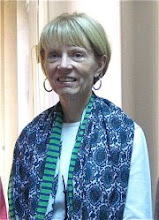More on Oran
 A Little History
A Little HistorySpanish Influence: Nestled in an extension of the Atlas Mountains, Oran descends in a natural amphitheater toward the sea. The city sits on a coastal strip in Northwest Algeria, where a dominant rocky massive, the Murdjadjo, looks out on miles of sea, bordered with beautiful beaches and inlets. Muslim Andalusians founded the city in 902 AD. Almohads and Zianides came soon afterwards. Oran was already a prosperous port during this time and engaged in commercial relations with many countries around the Mediterranean. Reconquered by the Spanish in 1509, Bey Mustapha Ben Youssef accomplished its liberation in 1708. Falling again under Spanish domination in 1732, decisive freedom from Spanish rule came only 1792. Given this history, vestiges of Spanish rule are plentiful in and around the city: the Fort of Santa Cruz (on Mount Murdjadjo), the walls of the Casbah, the Fort of El Mers El Kabir, cathedrals, as well as other monuments and buildings. In 1795,
Turkish and French Rule: Beys from the west took over Oran and prospered from the geostrategic importance of the city’s port. On December 10, 1830, Oran fell under French occupation. Currently, Oran has three industrial zones: Arzew (hydrocarbons), Hassi Ameru (construction), and Es Senia (port support services). Special assistance is provided for fishing, especially to fishermen using traditional fishing methods. It also has a scientific, technical university and a research center.
Personal Observations
This morning, great clouds hung over Santa Cruz Fort and Mount Murdjadjo, giving a mysterious cast to the sea and city. The first of the winter rains began, providing relief to land and greenery scorched by the summer heat. Today is Friday, so no shops of any importance are open, only a few superettes and newspaper stands, although no newspapers are printed on Fridays. I went to Ben M’Hidi Street to see if I could find any bookstores open, since I have run out of reading material, but will have to return another day. I did see a Stalingrad Café (Ahmed, the taxi driver, said there is also a street by the name), which seems bizarre in this day and age. The city in Russia has been renamed. Probably, the designation stems from colonial days, when the Soviet Union was considered a model of independent, successful development by countries in the developing world. Also, a communist party took over a local government in the city for a while. Ahmed pointed out that the streets are in the process of being given Arabic names.
A large, working class apartment building in light-blue prefab, set just behind the roadway along the waterfront with a 21-floor section, dominates the skyline along the corniche (coastal walkway). Clothes are hung out from the windows to dry–a familiar sight throughout the city. On the highway side, a lone, prominent sign in red lettering on white background, reads “SAGE FEMME (literally wise woman),” advertising to motorists as it hangs below a window. Ahmed defined the term, which would then translate into English as “midwife. “ Here’s an occupation where women are no doubt doing well!


0 Comments:
Post a Comment
<< Home